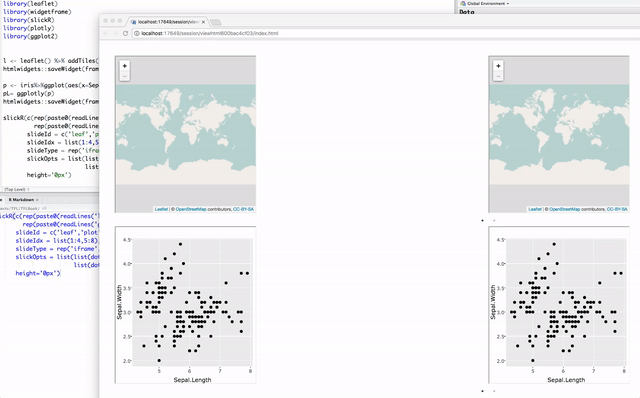
Then we're declaring some slide defaults for the slidesToShow calculation that will run when slick is initialized and again when the browser window is resized. Then we're wrapping everything else in an IIFE (Immediately Invoked Function Expression). In the JavaScript, we're importing the slick library and jquery. Import $ from ' jquery ' import ' slick-carousel ' ( function () )()
#Slick responsive resize install#
Since we're using npm to install the slick carousel and it's dependencies, in the project root, run npm init with the -y flag to generate an empty project with the default settings. Using Emmet, which is built into VS Code, you can create the index.html content by entering an exclamation mark on the first line then select the tab key. See Inserting images into posts and pages.Responsive slidesToShow | Slick Carousel Demo First Slide Second Slide Third Slide Fourth Slide
#Slick responsive resize full size#
Avoid using Full Size images unless the dimensions are adequate for their usage. Upload images directly through the media library to ensure that the required image sizes are available, and then insert them from the media library or use the image widget to ensure the optimal image sizes are used (including those for the responsive breakpoints). Joomla #Ĭonsider using a responsive images plugin. It can also create SVG image placeholders for efficient lazy loading. Use the gatsby-image plugin to generate multiple smaller images for smartphones and tablets. Use the built-in Responsive Image Styles feature (available in Drupal 8 and above) when rendering image fields through view modes, views, or images uploaded through the WYSIWYG editor. Angular #Ĭonsider using the BreakpointObserver utility in the Component Dev Kit (CDK) to manage image breakpoints. See also Responsive images with srcset, sizes & heights. Use the amp-img component's support for srcset to specify which image assets to use based on the screen size.

The image is going to be responsive (it will scale up and down). Set the width property to a percentage value and the height to 'auto'.

Another way of resizing images is using the CSS width and height properties. There are also image CDNs which let you generate multiple versions, either when you upload an image, or request it from your page. Resize images with the CSS width and height properties. Tools like gulp-responsive or responsive-images-generator can help automate the process of converting an image into multiple formats. See Replace complex icons with SVG to learn more. With a finite amount of code, an SVG image can scale to any size.

You can think of image CDNs like web service APIs for transforming images.Īnother strategy is to use vector-based image formats, like SVG. Image CDNs are another main strategy for serving appropriately sized images. See Serve responsive images to learn more. With responsive images, you generate multiple versions of each image, and then specify which version to use in your HTML or CSS using media queries, viewport dimensions, and so on. The main strategy for serving appropriately sized images is called "responsive images". Anything larger than that just results in wasted bytes and slows down page load time.

This is the best all round solution that I've come across to resolve this issue. Ideally, your page should never serve images that are larger than the version that's rendered on the user's screen. There are so many methods to get a fluid equal height in jQuery, but in testing many (seriously loads) I've found that there's usually a glitch and that's often that the container doesn't adjust on window resize. If the rendered size is at least 4KiB smaller than the actual size, then the image fails the audit. The rendered size also accounts for device pixel ratio. Resize these images to save data and improve page load time: How Lighthouse calculates oversized images #įor each image on the page, Lighthouse compares the size of the rendered image against the size of the actual image. The Opportunities section of your Lighthouse report lists all images in your page that aren't appropriately sized, along with the potential savings in kibibytes (KiB). How Lighthouse calculates oversized images.


 0 kommentar(er)
0 kommentar(er)
